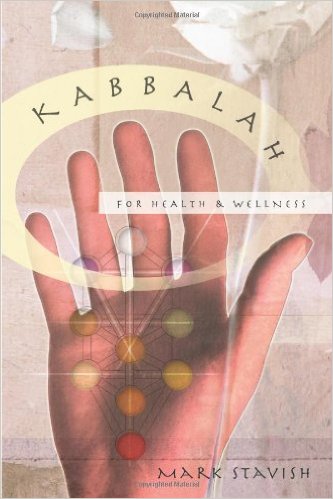The Problem of Evil
by esotericist Mark Stavish
The problem of evil is a perennial one for students of esotericism. Various philosophies address the problem in different manners, but in synthesis, there seems to be several distinct areas of overlap and agreement.
While alchemy does not address the idea of evil directly, it speaks of purification, sublimation, and other acts that suggest that our emotions, physical matter, and thoughts can exist in an imperfect state and somehow brought to perfection, or at the very least, a more desirable condition. All matter is imperfect compared to its spiritual archetype that it incarnates, but it is not evil, that is, in active and conscious rebellion against the ‘Good.’
Gnosticism addresses evil in two ways: relative and absolute. Matter and material life are seen as undesirable, as they are prison houses of the spirit. Like various schools of yoga and Buddhism, material life is to be escaped from and is de facto ‘evil.’ Matter keeps us from being free, unhindered, and spiritual beings without temptations and passions. This is interesting in light of the idea that the early angels united ‘with the daughters of men’ and thereby created offspring of legend referred to as ‘giants’ in the Old Testament. Clearly being ‘spiritual’ or without a physical body isn’t enough when it comes to being ‘passionless,’ but this seems to escape most of the discussion in this area.
Qabala is among the most balanced of the approaches in that it sees evil as relative, and necessary. It is to be overcome without condemning the material world.
In fact, in Qabala and Alchemy material life is our life. It is where we are in the here and now. We can think of earth as a school, a prison, a blank slate, or as whatever we like. Even if we believe in life having an evolutionary purpose and the influence of astrological Signs and Ages to push humanity along, life has no meaning until we give it meaning. All the guiding and directing in the cosmos is worthless unless we commit ourselves to a cause, something greater than ourselves, and work to express it, even if we may not live to see it.
The great cathedrals of Europe, temples of the ancients, and other places of majesty and wonder were built by people who would never live to see them completed. While for many of them it was just a job same as any other, or forced labor as a slave or serf, many of the artisans and professional builders employed took great pride in their work and saw it for what it was – a monument to something greater than the limits of earthly human life. Even in anonymity, their lives had, and still do, great meaning as we worship, tour, or simply admire from a distance, their labor, centuries after it was completed.
If you see material existence as good or evil, this is a reflection of your inner life. We hear often of the power of positive thinking, and the more cynical among us, who are often the more intelligent as well, sneer and either disregard it or simply pay lip service to the idea.
In truth, “Positive Thinking†is in many ways a lie. However, the reason is not in the idea, or theory, but the language used to transmit it. When we conceptualize the idea of thinking, it is often relegated to the idea of problem solving, and as such, rational and logical processes. However, thinking is more than logic, or problem solving, it is our worldview. Our thinking is the filter we use to process the world, how it works, our place in it, and relationship to others.
The greatest power in our ‘thinking process’ is not our ability to reason and use logic, but our ability to feel. Our emotions are our greatest asset in this area. If we ‘feel’ positively about life, then life takes on a flavor, color, or experience that logic and reason cannot transmit. Emotions are the driving force, the energy of the psyche, of human consciousness. When talk of the “Power of Positive Thinking†what is really being said is the “Power of Positive Feeling.â€
Studies have shown that ‘optimists’ are more successful than ‘realists.’ This fundamental fact explains why so many smart people are often so under-achieving, under-paid, and under-fulfilled with their lives.
Modern educational systems develop the rational and logical at the expense of the emotional. Cynicism is encouraged and rewarded by the media, and academia. Yet if we look closely at ‘realists’ we see that they are essentially looking for an excuse not to act. They are afraid of failure, of making a mistake, of essentially living, and also of dying.
If you come to accept your mortality, then fear drips away, and problems of success, failure, even good and evil take on a more manageable perspective. Accept this – you will die, so act, and act as if it is today, for someday it will be.
This doesn’t mean that we throw away our resources, or ignore reason and logic, but instead, that after considering them, we still pick something and dedicate ourselves to its realization.
If you would like to be successful, and find meaning in your life, you must first decide what is the single thing you want to accomplish. What do you want to dedicate your limited, and numbered human days to promoting, building, and embodying even if you do not live to see its fruition?
Second, turn off your television. Get rig of cable, satellite TV, [Katia inserts: Pokemon Go, Facebook, Cellphone addiction] or whatever it is that you plug into that drains your life force.
Third, meet and collaborate with others who are seeking to build and promote their lives, even if their projects are not esoteric or spiritual in nature, so long as they are developing, encouraging, and demonstrating the effectiveness of an ‘optimistic’ attitude.
Fourth, do not discuss your plans with anyone who cannot directly assist you in their fruition. Avoid nay sayers and similar ‘realists’ who will tell you from their position of superiority, built upon a mountain of failure and self-imposed fears and limitations, that what ever ‘It’ is, ‘it can’t be done.’
Fifth, read biographies about the great men and women who have overcome all obstacles to achieve their dreams. Even if the books are older, and the stories slightly romanticized, read them anyhow. It is inspiration and example that you are seeking to internalize and emulate, not a ‘tell-all’ expose. A wonderful example of this kind of inspirational biographical writing is Twelve Against the Gods by William Bolitho.
Sixth, and finally, give back, here and now. Generosity is a form of confidence in the future, as well as gratitude for what you have. Give of your time, knowledge, and material wealth. All three must be given for this to work, because in doing so, you create a chain of events and habits, that will cascade back onto you and reward you with opportunities otherwise outside your reach. In your acts of generosity of time, talent, and treasure, your true inner attitude, deepest held feelings, are revealed. However, the time is now, and without concern for your ‘personal reward’ that might come as a result of your actions. Give, give generously, give wisely, give regularly, and give impersonally.
In doing this, you create a better life for yourself, and a better world for others in which evil has no place to hide or to grow.
This document may be cross-posted as long as the authorship and copyright attribution remains intact.
For more information on how to use the power of belief and emotions to create a better life for yourself and others, see [Mark Stavish’s awesome new book] :
The Inner Way – The Power of Prayer and Belief in Spiritual Practice
 While it is generally agreed that our outer health, and even material circumstances, are a direct reflection of our inner wholeness, the connection of this idea in reality is a lot less simple for many in practice. Much, if not all of this difficulty comes from the notion that esotericism is a sort of ‘do it yourself’ process, in which practitioners can ‘pick what they like and leave the rest behind’. In reality, while that is fine to tell drug addicts and alcoholics in an NA or AA meeting and who are on the edge of total self-destruction (so anything is better than nothing) it is a lie when it comes teaching students who “of their own free will and accord†have placed themselves on a path of illumination.
While it is generally agreed that our outer health, and even material circumstances, are a direct reflection of our inner wholeness, the connection of this idea in reality is a lot less simple for many in practice. Much, if not all of this difficulty comes from the notion that esotericism is a sort of ‘do it yourself’ process, in which practitioners can ‘pick what they like and leave the rest behind’. In reality, while that is fine to tell drug addicts and alcoholics in an NA or AA meeting and who are on the edge of total self-destruction (so anything is better than nothing) it is a lie when it comes teaching students who “of their own free will and accord†have placed themselves on a path of illumination.
